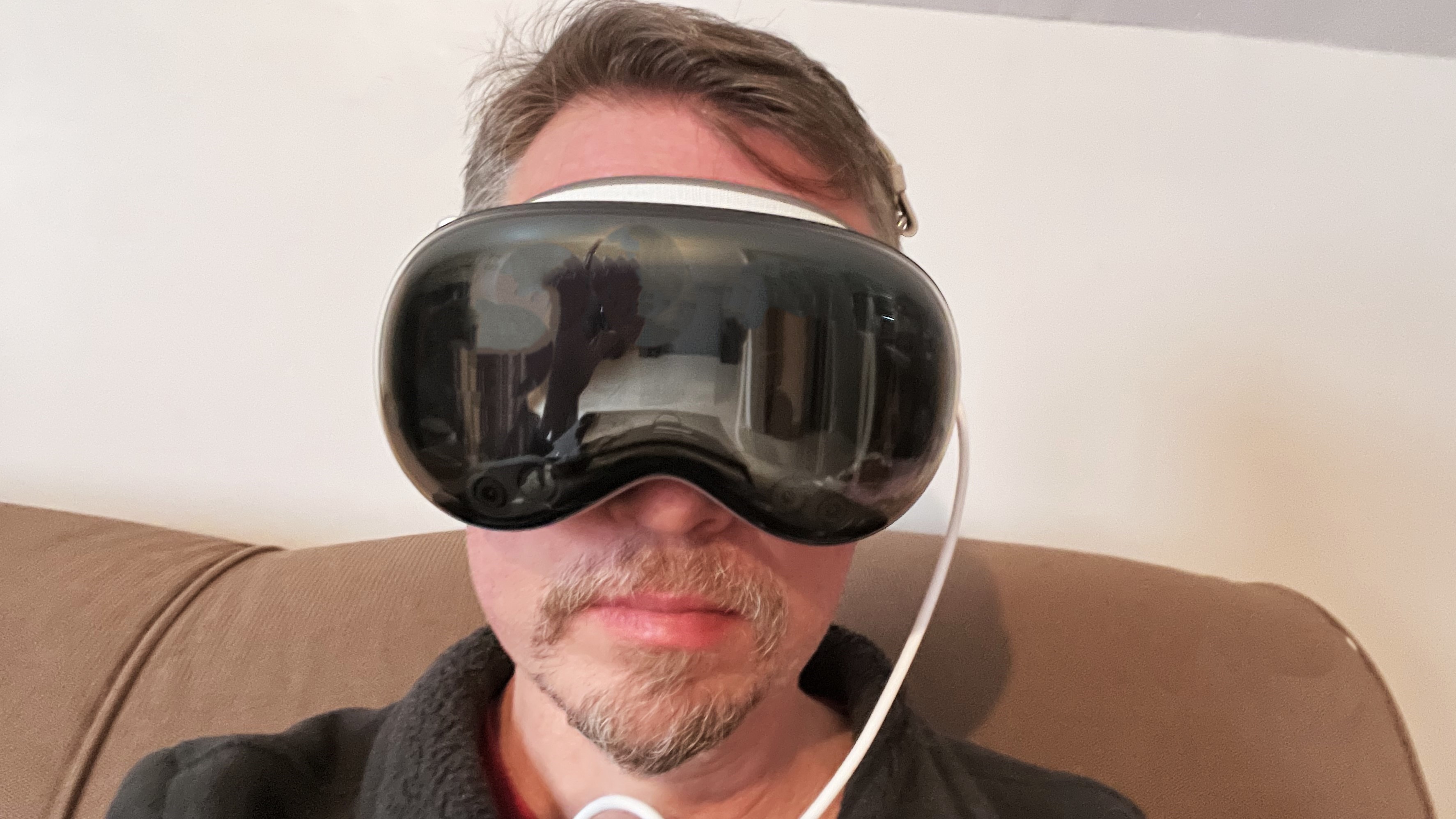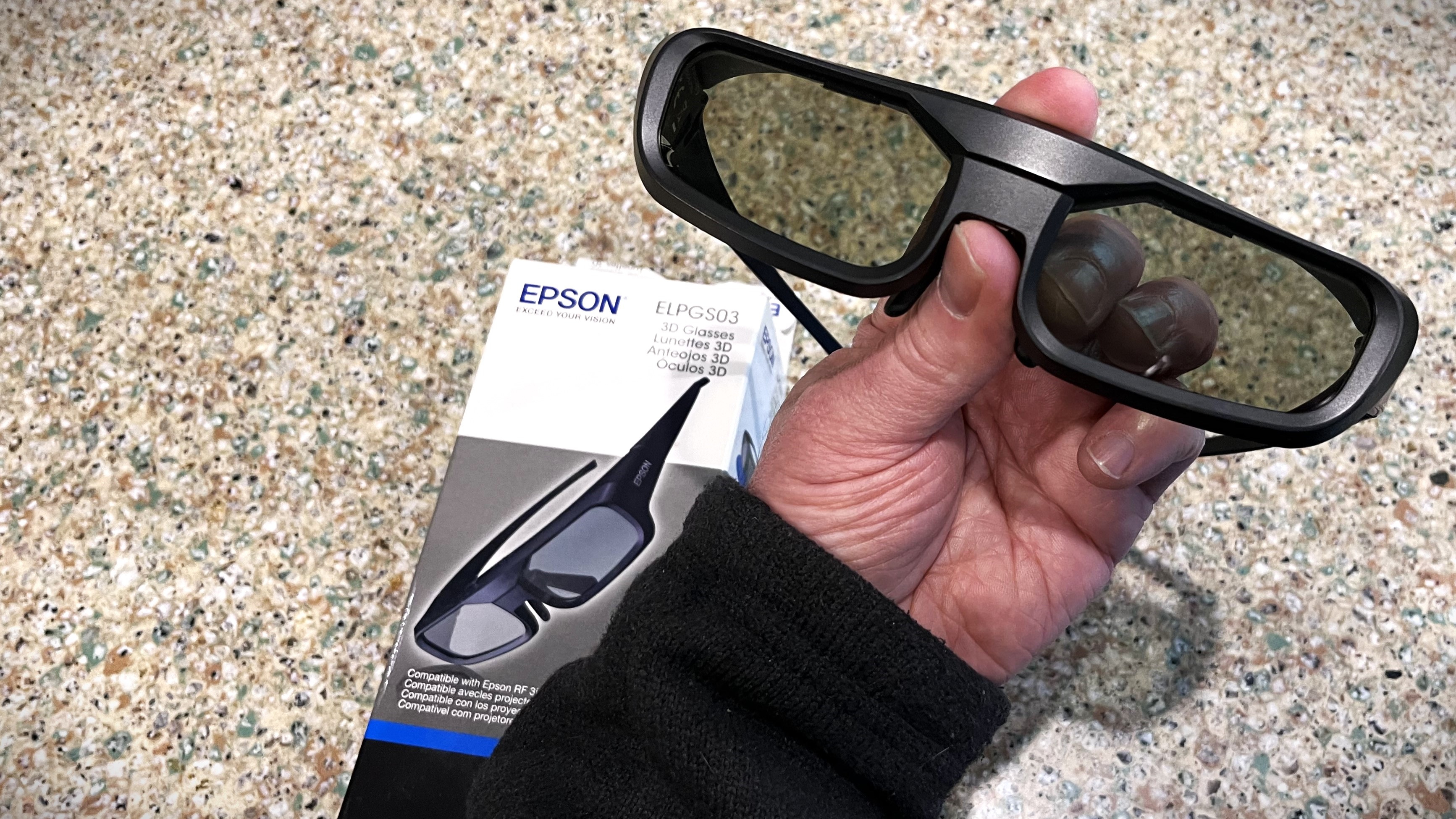The newest chapter in our collective love affair with 3D films got here and went rapidly, with set producers scrambling so as to add the characteristic to the best TVs round 2010, after which retreating fully from 3D assist quickly after. In a couple of brief years, it was over. Throughout that period, I amassed a sizeable assortment of Blu-ray 3D discs, they usually now sit filed away in a distant nook of my media cupboard, a reminder of that point and a potent supply of nostalgia.
It might have disappeared from TVs, however 3D by no means actually went away. Motion pictures on Blu-ray 3D proceed to trickle out, although if you wish to view them in that format it is advisable to watch them on the best 4K projectors, a few of which nonetheless assist 3D. You may also catch films in theaters in 3D, with the latest blockbuster showcase for the format being the Avatar sequel, Avatar: The Way of Water.
Now, there’s one other method to watch films in 3D at residence: the Apple Imaginative and prescient Professional blended actuality headset. Motion pictures in 3D will be bought on the Imaginative and prescient Professional’s Apple TV app, and an in depth assortment of titles can be found to stream on its Disney Plus app. Three titles – these are Avatar, Avatar: The Means of Water, and Titanic – are additionally obtainable in these apps in a “motion-graded” Excessive Body Price (HFR) format, which is how they have been proven in Imax theaters – The Means of Water on its preliminary launch, and Avatar and Titanic in re-release.
Pixelworks, the corporate behind the TrueCut movement grading expertise used for the post-production of all three films, not too long ago lent me a headset so I might try motion-graded 3D on the Apple Imaginative and prescient Professional, which is at present the one supply for residence 3D film releases apart from Blu-ray disc. It was a deal with to spend time with Apple’s expensive, elaborate blended actuality headset, which you’ll be able to learn all about in our Apple Vision Pro review. Taking part in films in 3D format is simply one of many many issues the Apple Imaginative and prescient Professional can do, and it does it exceptionally nicely.
Trying again on 3D TVs
Having spent many hours watching 3D films with my youngsters through the 3D TV heyday – loads of the releases have been animated ones, they usually have been on the prime age to take pleasure in them – I’m nicely conscious of what good – and mediocre – 3D appears like. Maybe the very best instance of 3D animation I do know of is Coraline, based mostly on the ebook by Neil Gaiman and directed by Henry Selick (Coraline, by the way, is getting a 3D theatrical re-release in summer time 2024 to have fun its fifteenth birthday). That disc obtained loads of play in my home, and it’s one I’d recurrently use to check 3D TVs.
One other profitable instance of 3D cinema is the unique Avatar, which seemed unbelievable in theaters and on Blu-ray. Except for watching Martin Scorcese’s Hugo, one other 3D triumph, it will be 13 years earlier than I discovered myself absorbed by a 3D film, and that was once I watched Avatar: The Means of Water at an IMAX theater. However within the case of Avatar: The Means of Water, 3D was just one factor that made the expertise spectacular. One other, equally essential, one was its motion-graded Cinematic HFR presentation.
TrueCut Movement: the way it works
Not like typical films proven with a 24 frames-per-second (fps) body fee, films motion-graded utilizing Pixelworks’ expertise show at the next, 48 fps fee. HFR’s essential profit is it eliminates the judder and blur artifacts accompanying fast-motion scenes captured at 24 fps. However boosting the body fee to 48fps may give films an excessively fluid and unnatural look, particularly in quiet scenes with no motion.
With TrueCut movement grading, the filmmaker can selectively differ body charges on a scene-by-scene foundation in post-production, utilizing the next fee for fast-action scenes, and a regular 24 fps fee for extra typical ones. This course of will give viewers the very best of each worlds: crisp, blur- and judder-free photographs in photographs with motion, and a pure sense of movement when the motion slows down.

Enter the digital theater
To check motion-graded and non-motion-graded films on the Apple Imaginative and prescient Professional, I first watched a downloaded model of No Time to Die, the latest entry within the James Bond movie franchise. No Time to Die is a film with motion scenes galore, and it’s one I’ve used many occasions to guage a TV’s movement dealing with. So, why not additionally on Apple’s mixed-reality headset?
Watching a scene the place the digital camera pans slowly throughout a cemetery on a tough, hilly panorama, the picture confirmed loads of movement blur and a big lack of element. In a subsequent scene the place Bond and Madeline race in a automobile by way of metropolis streets with assassins in scorching pursuit, buildings within the background additionally had a blurred high quality that made the picture look overly comfortable.
It might have been a super comparability if a motion-graded model of No Time to Die have been obtainable (it’s not), however I as a substitute needed to make do with watching a obtain of the motion-graded model of the unique Avatar.
Identical as once I watched it in a theater, and on 3D TVs again within the day, Avatar on the Apple Imaginative and prescient Professional had glorious 3D depth, and I used to be simply immersed in its 3D world. TrueCut movement grading made the movie’s virtually continuous motion scenes look persistently crisp, with the Na’vi and the creatures they rode upon and the intricately rendered jungle backgrounds wanting equally stable and detailed. I additionally didn’t really feel the motion was occurring unnaturally quick, which might have rapidly whisked me out of the 3D world.
Testing different 3D films within the Disney Plus app, Avatar: The Means of Water was a spotlight, with eye-popping 3D results and unbelievable image distinction made potential by the Apple Imaginative and prescient Professional’s powerfully shiny show. It seemed higher than I remembered from my theater expertise, although the movement wasn’t as persistently pure throughout scenes as within the re-mastered Avatar.

The brand new 3D – similar because the previous, however with a twist
I could harbor nostalgia for 3D films, however I can’t say I’ve missed them terribly because the final 3D growth fizzled out. Avatar: The Means of Water was a welcome throwback, however one 3D blockbuster doesn’t equal a 3D revival.
Fortuitously for film followers, motion-graded Cinematic HFR is catching on. Following Avatar, its sequel, and Titanic being proven in theaters within the format, Argylle and Kung Fu Panda 4 from DreamWorks Animation have been launched in Cinematic HFR. That signifies regular progress for the format, particularly since each Argylle and Kung Fu Panda 4 are from studios apart from Disney.
I’ve had enjoyable watching 3D films on the Apple Imaginative and prescient Professional, although there admittedly is one thing a bit alienating about sitting in a chair sporting a headset for prolonged durations. However then once more, 3D films have at all times concerned sporting some type of awkward eyewear that eliminated you from on a regular basis existence, and possibly that’s their final attraction.



Discussion about this post